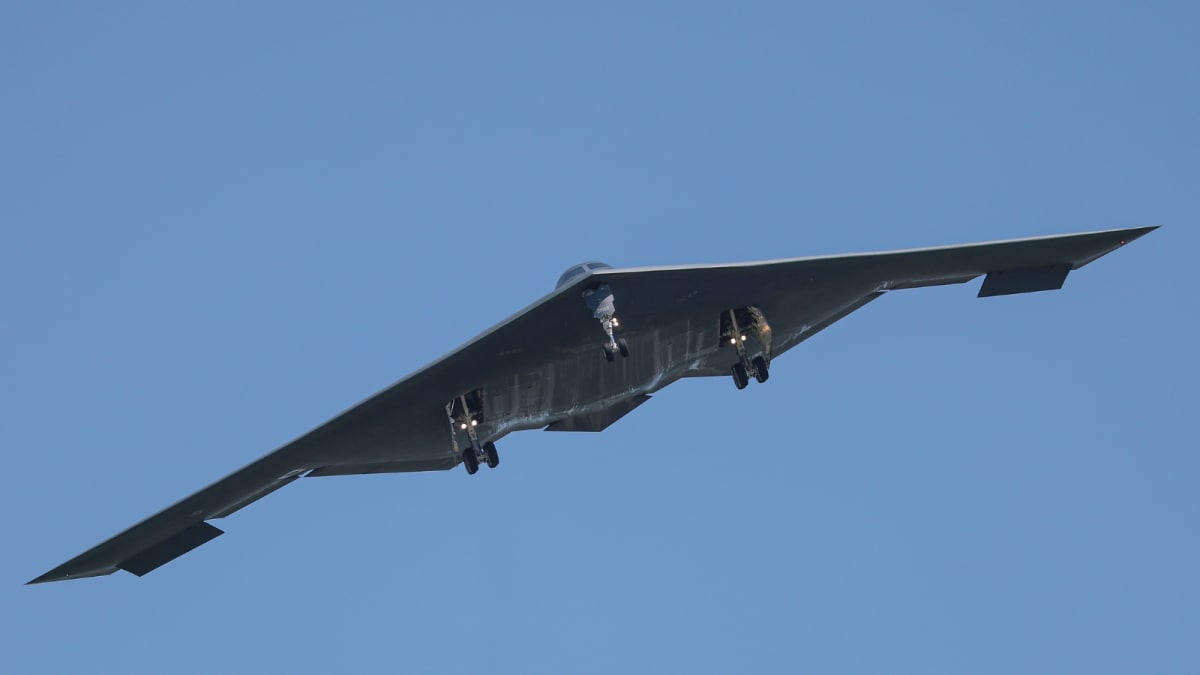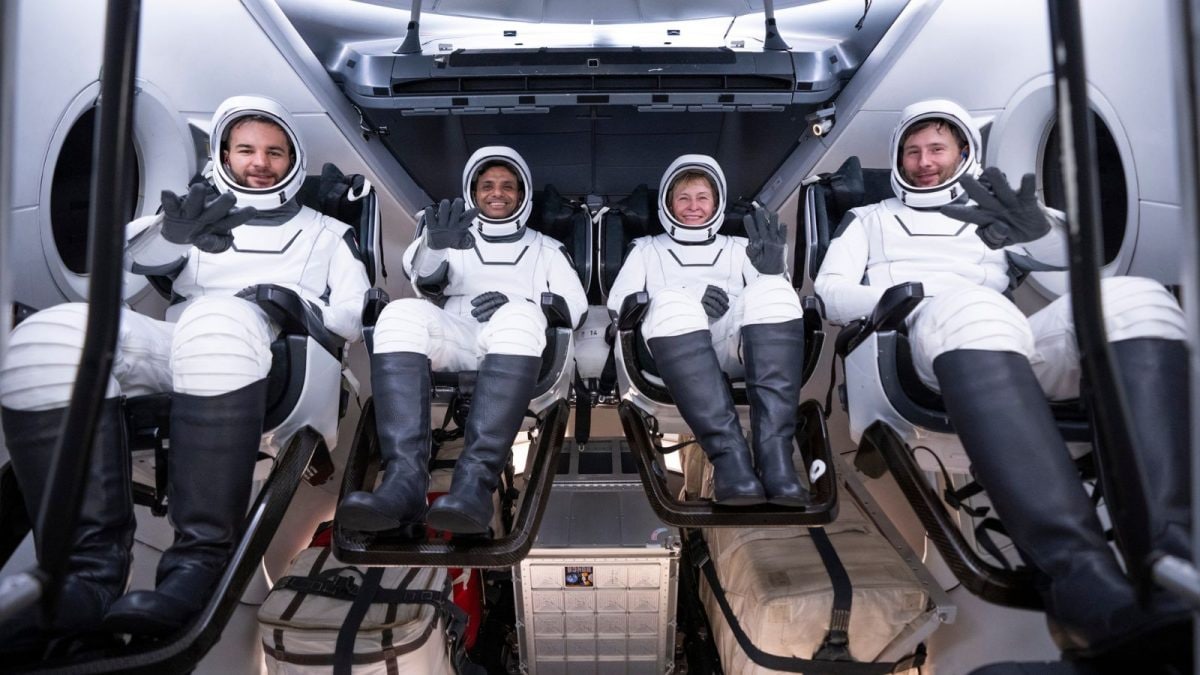Last Updated:June 25, 2025, 16:15 IST
News18 offers a closer look at the space station where astronauts spend weeks or months living, working, and conducting groundbreaking experiments in the unique conditions of space

The ISS is typically designed to accommodate six crew members on a long-term basis. (AP/File)
In a significant development, India’s Shubhanshu Shukla and three other astronauts have embarked on a mission to the Space Station (ISS) under the Axium-4 mission. The crew will reside on the ISS for 14 days, sparking curiosity about life and operations aboard the station.
The ISS is a one-of-a-kind science lab orbiting about 400 km above Earth. Often called a space city, it’s where astronauts live and work in microgravity, conducting experiments that can’t be done on Earth. From eating freeze-dried food and drinking recycled sweat and urine to sleeping in wall-mounted bags and exercising for hours to stay fit, life on the ISS is unlike anything on the planet.
Here’s an in-depth look at the space station where astronauts spend days — and sometimes months — living, working, and pushing the boundaries of science.
What Is The ISS And How Was It Built?
The Space Station (ISS) is a massive space laboratory orbiting Earth in low Earth orbit. It is the largest man-made structure in space and was built through the collaboration of multiple countries. Construction of the ISS began in 1998 and was completed by 2011. The station orbits at an altitude of approximately 400 kilometers above Earth and travels at a speed of about 27,600 km/h, completing one full orbit every 90 minutes.
How Big Is The ISS and How Much Space Is Habitable?
The Space Station is roughly the size of a football field. It measures 73 meters in length, 109 meters in width, and 20 meters in height—about as tall as a four-storey building. The ISS weighs around 420 tons, equivalent to the weight of 76 to 187 adult Indian elephants, each weighing between 2.25 and 5.5 tons. Of its total volume, 932 cubic meters is habitable, offering living space comparable to that of a large house.
How Does The ISS Work And What Powers It?
The Space Station operates through several sophisticated systems that ensure it remains functional and habitable:
Solar Power System: The ISS runs on solar energy. It is equipped with eight large solar arrays covering about 2,500 square meters. These panels generate between 84 to 120 kilowatts of electricity by converting sunlight into power.
Life Support System: The station has advanced systems to maintain oxygen levels, regulate temperature, and manage water. Oxygen is produced through electrolysis, which splits water into hydrogen and oxygen.
Water Recycling: Sweat, urine, and other moisture are collected and purified to produce drinking water. Essentially, astronauts drink recycled sweat and urine.
Carbon Dioxide Removal: Special filtration systems remove carbon dioxide from the cabin air to maintain a breathable atmosphere.
Communication System: The ISS stays in touch with Earth through a network of satellites and ground stations, primarily using NASA’s Tracking and Data Relay Satellite System.
Navigation And Microgravity: The station orbits in a microgravity environment, meaning gravity is nearly absent. This allows all objects to float and makes the ISS an ideal platform for scientific experiments in space.
How Does The ISS Stay In Orbit And What Fuel Does It Use?
The Space Station orbits Earth at high speed and uses two main systems to maintain its altitude and position:
Propulsion System (Altitude Control and Maneuvering): This is handled by rocket engines, primarily on the Russian segment of the ISS. It uses hypergolic fuel, specifically nitrogen tetroxide, which ignites on contact without the need for an external ignition source. The Russian Progress cargo spacecraft and the Zvezda module are equipped with these engines.
Electric Propulsion System (Ion Thrusters): Used by the American segment, this system relies on ion thrusters powered by xenon gas. The gas is ionized using electricity to generate thrust. Although this system produces lower thrust compared to chemical propulsion, it is highly efficient and can operate for extended periods with minimal fuel.
Where Does The ISS Get Its Fuel?
The Space Station receives its fuel from cargo missions. Russian Progress spacecraft and Northrop Grumman’s Cygnus missions deliver hypergolic propellants like UDMH (unsymmetrical dimethylhydrazine) and nitrogen tetroxide (N₂O₄) to power its thrusters. While SpaceX’s Dragon spacecraft delivers essential supplies, equipment, and scientific cargo, it does not transport fuel. Looking ahead, methane-based engines and hydrogen-oxygen propulsion systems are being considered as potential alternatives for future missions.
How Many Modules Or Rooms Are Inside The ISS?
The Space Station is made up of multiple interconnected modules, developed and contributed by 16 countries including the United States, Russia, Japan, Canada, and several European nations.
Major Modules: Key working areas include the American lab Destiny, Japan’s Kibo module, the European lab Columbus, and Russian modules like Zvezda and Poisk. These serve as laboratories and workspaces for astronauts.
Living Quarters: The ISS has six sleeping quarters, two bathrooms, and even a small gym. Astronauts sleep in small cabins using sleeping bags that are secured to the walls, as the absence of gravity would otherwise cause them to float while sleeping.
How Do Astronauts Eat And Drink On The ISS?
Astronauts eat specially prepared food that is canned, dry, or freeze-dried. It is often heated before consumption. Drinking water is sipped through a straw connected to a sealed pouch, as the absence of gravity makes it impossible to drink from a regular glass. Salt and pepper are provided in liquid form to prevent particles from floating in the air and interfering with equipment or being inhaled.
How Do Astronauts Bathe On The ISS?
There are no showers aboard the Space Station. Instead, astronauts clean themselves using wet towels and no-rinse shampoo. To maintain hygiene, they rely on minimal water usage, and the toilet uses a suction system to remove waste and moisture effectively in a zero-gravity environment.
Is There A Gym On The ISS?
Yes, the ISS has a gym. To prevent muscle and bone loss in microgravity, astronauts follow a strict fitness routine. They exercise for about two hours each day using treadmills, stationary bikes, and resistance machines specially designed for use in space.
How Many Experiments Have Been Conducted On The ISS?
More than 3,000 experiments have been carried out aboard the ISS. These include scientific research in microgravity, studies on how space affects the human body, testing new medicines and materials, and preparations for future deep-space missions, including potential crewed missions to Mars.
How Many People Can Live On The ISS At The Same Time?
The ISS is typically designed to accommodate six crew members on a long-term basis. However, during special missions or crew rotations, this number can rise to 7–10 people. The station has six sleeping cabins, split between the Russian and American segments. Usually, there are three astronauts from the U.S., Europe, or Japan, and three from Russia. At times, with the arrival of commercial crew missions or space tourists, the onboard population temporarily increases—as seen during SpaceX’s Inspiration4 mission in 2021, when 10 people stayed on the station.
Location : First Published:News india How The ISS Recycles Sweat And Urine For The Astronauts To Drink

 4 hours ago
4 hours ago

















